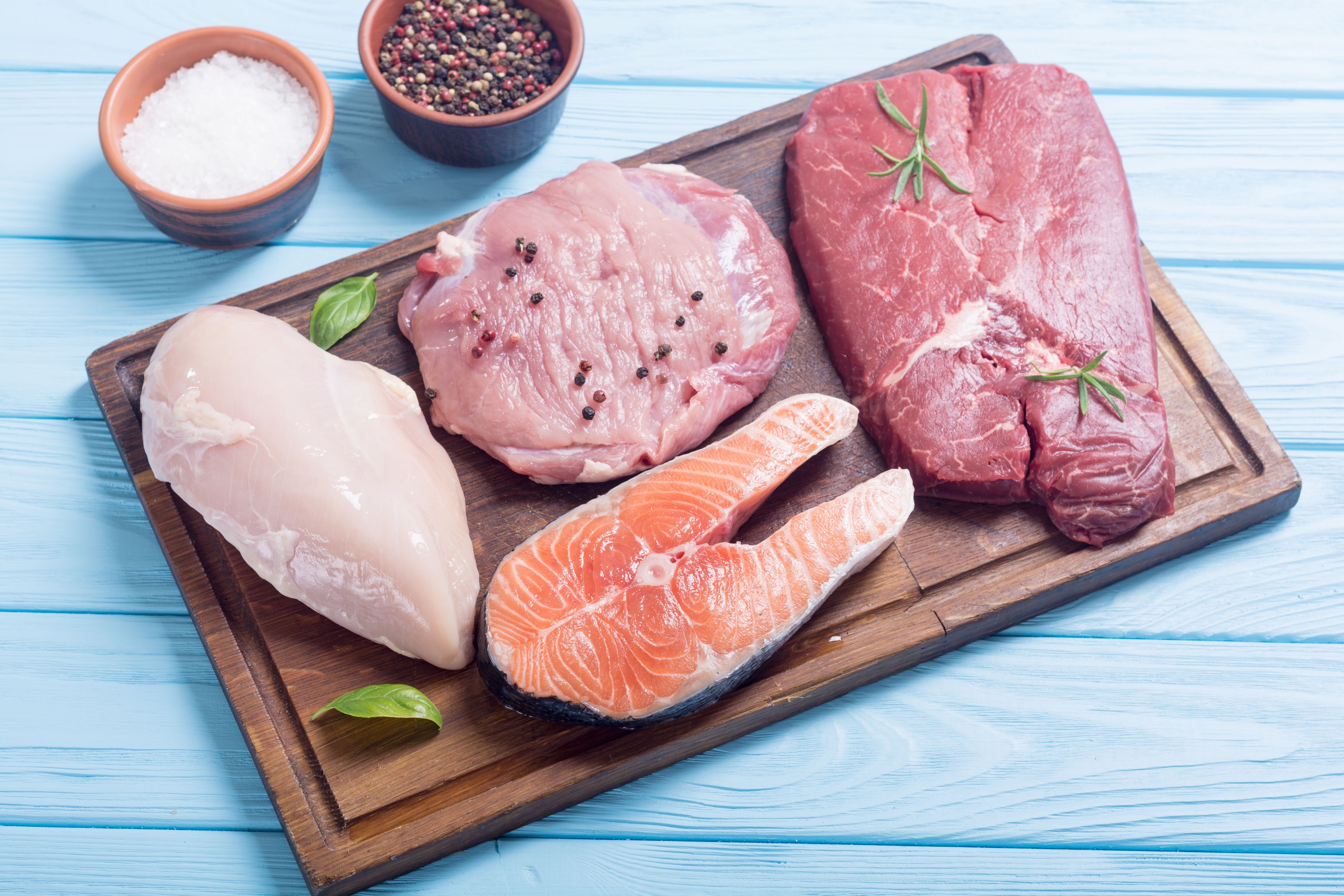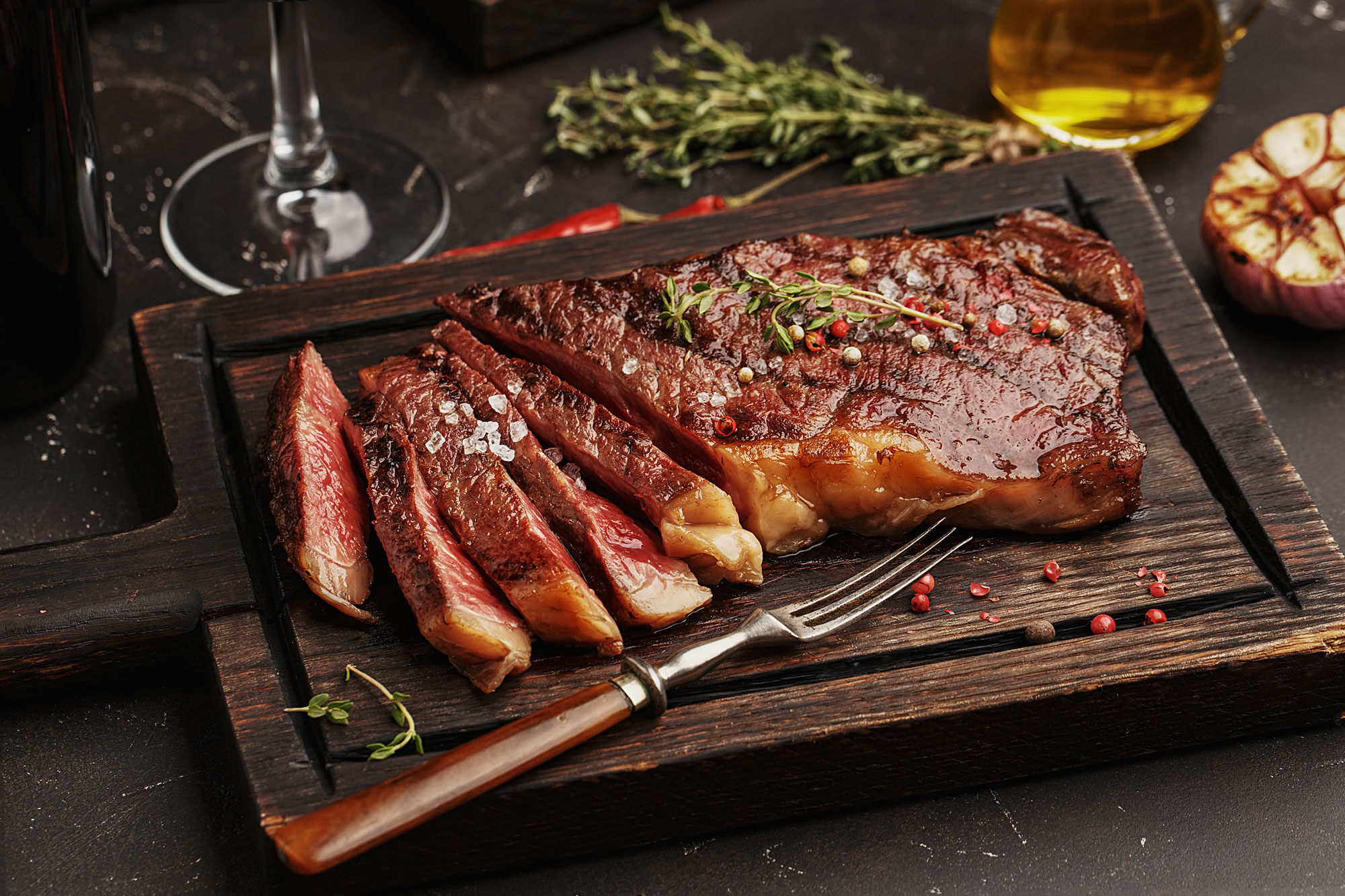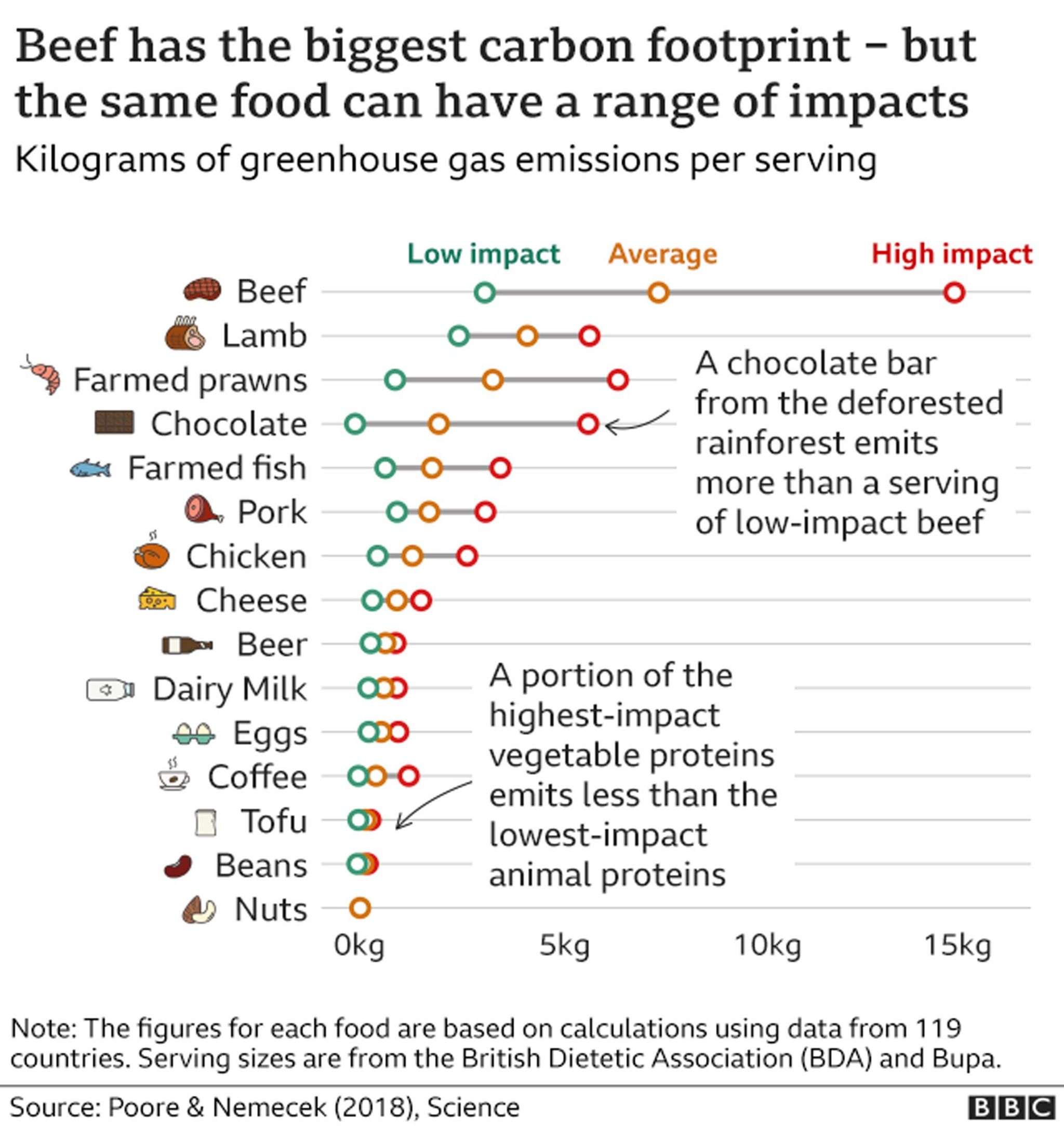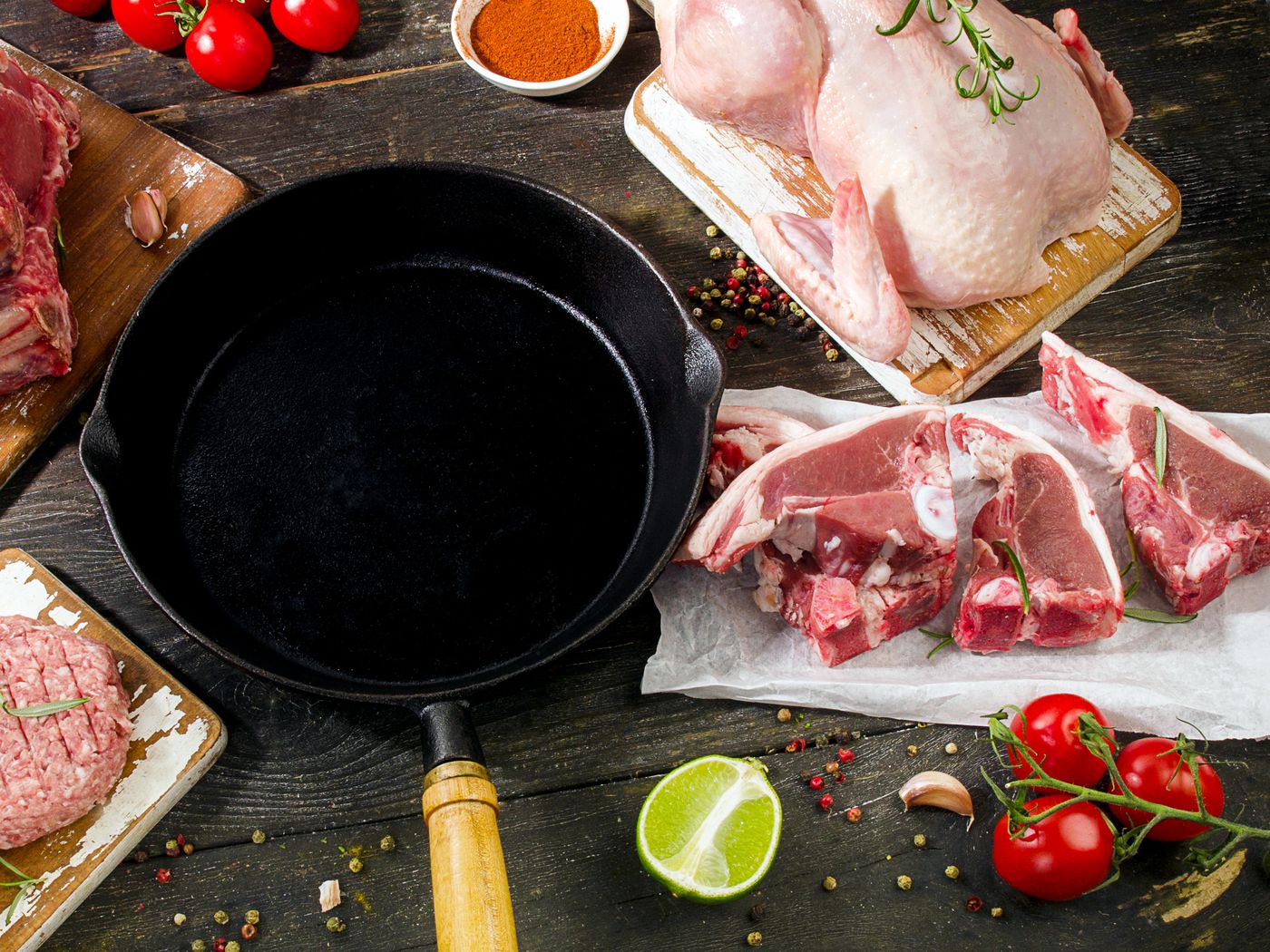Nutritional Comparison

When comparing the nutritional content of chicken and lamb, there are some key differences to consider. Chicken is a leaner option, with lower levels of fat and fewer calories. It is also rich in protein, which is essential for muscle growth and repair. On the other hand, lamb contains more fat, including saturated fat. However, it is a good source of essential nutrients such as iron, vitamin B12, and zinc. Both chicken and lamb can be included in a balanced diet, but it’s important to consider individual health goals and dietary preferences.
Nutritional Benefits Of Chicken
Chicken is a highly nutritious protein source. It is low in fat and calories, making it an excellent choice for those looking to maintain a healthy weight. Chicken is also rich in high-quality protein, which is essential for muscle growth, repair, and overall tissue health. Additionally, chicken is a good source of vitamins and minerals such as vitamin B6, vitamin B12, zinc, and selenium. These nutrients play a vital role in supporting immune function, promoting brain health, and aiding in the production of red blood cells. Incorporating chicken into a well-balanced diet can provide numerous health benefits.
Nutritional Benefits Of Lamb
Lamb offers several nutritional benefits. It is a good source of high-quality protein, essential for muscle growth and repair. Lamb is also rich in iron, which is important for maintaining healthy red blood cells and preventing anemia. Additionally, lamb contains vitamins such as vitamin B12, which is essential for nerve function and energy production. Furthermore, lamb is a good source of zinc, which plays a vital role in immune function and wound healing. Incorporating lamb into a balanced diet can provide these important nutrients and support overall health.
Health Impact

When it comes to the health impact, both chicken and lamb have their own benefits. Consuming poultry, such as chicken, can be beneficial for maintaining a healthy weight due to its lower fat content. It is also a good source of protein, vitamins, and minerals. On the other hand, red meat like lamb can provide essential nutrients, including iron, vitamin B12, and zinc. However, it is important to note that excessive consumption of red meat may increase the risk of certain health conditions. Therefore, it is advisable to consume both chicken and lamb in moderation as part of a balanced diet.
Health Benefits Of Consuming Poultry
Poultry, such as chicken, offers numerous health benefits. It is a lean source of protein, with lower fat content compared to red meat. Protein is essential for muscle growth, repair, and overall body function. Additionally, chicken is a good source of vitamins and minerals, including vitamin B12, which supports the nervous system, and zinc, which strengthens the immune system. Consuming chicken as part of a balanced diet can also aid in maintaining a healthy weight. However, it is important to choose lean cuts and avoid excessive salt and saturated fat in cooking and preparation methods.
Health Benefits Of Consuming Red Meat
Red meat, such as beef, lamb, and pork, offers several health benefits. It is a rich source of essential nutrients, including iron, zinc, and B vitamins. Iron helps transport oxygen in the body, while zinc supports the immune system and promotes wound healing. B vitamins are crucial for energy production and maintaining a healthy nervous system. Red meat also provides high-quality protein, which is essential for muscle growth and repair. However, it is important to consume red meat in moderation and choose lean cuts to avoid excessive saturated fat intake and associated health risks.
Cooking Methods

When it comes to cooking chicken and lamb, there are various methods that can be used to bring out the best flavors and textures. For chicken, some of the best cooking methods include grilling, baking, and sautéing. These methods help retain the juiciness of the meat while adding a delicious charred flavor.
On the other hand, lamb can be prepared using methods such as roasting, braising, and grilling. Roasting brings out the rich flavors of the meat, while braising helps to tenderize tougher cuts of lamb. Grilling lamb chops or kebabs can result in a smoky and flavorful dish.
Remember to use appropriate seasonings and marinades to enhance the taste of both chicken and lamb.
Best Cooking Methods For Chicken
Grilling, baking, and sautéing are some of the best cooking methods for chicken. Grilling chicken breasts or thighs imparts a delicious smoky flavor while keeping the meat juicy. Baking chicken in the oven is a convenient method that allows for easy seasoning and the option to add sauces or marinades. Sautéing chicken in a skillet with some oil or butter creates a crispy and flavorful exterior while retaining the tenderness of the meat. Whether you prefer a charred taste, a saucy dish, or a crispy texture, these cooking methods will surely satisfy your palate.
Best Cooking Methods For Lamb
When it comes to cooking lamb, there are several methods that bring out its delicious flavors. The best cooking methods for lamb include slow-cooking and roasting. Slow-cooking lamb allows for tender meat that falls off the bone and develops rich flavors. Roasting is another excellent method that creates a crispy exterior while maintaining succulent meat. Additionally, grilling or broiling lamb can provide a smoky charred taste. From a Sunday roast to a hearty stew, these cooking methods ensure that the flavors of lamb shine through in every bite.
Environmental Impact

The environmental impact of chicken and lamb production varies significantly. While chicken production has a relatively lower carbon footprint compared to beef and lamb, it still contributes to greenhouse gas emissions and land degradation. On the other hand, lamb production has a higher carbon footprint due to factors such as deforestation and higher resource consumption. Additionally, both industries face challenges such as waste management and water pollution. It is important to consider these environmental impacts when making choices about poultry and red meat consumption. Sources:
Environmental Footprint Of Chicken Production
The environmental footprint of chicken production is relatively lower compared to beef and lamb. However, it is important to recognize that chicken production still contributes to greenhouse gas emissions and land degradation. The carbon emissions caused by a single serving of chicken are estimated to be at least 11 times higher than a single serving of beans. This indicates that while substituting meat with chicken has a lesser impact on the environment, the poultry industry’s contribution to climate change and pollution cannot be ignored. It is crucial to consider these environmental factors when making choices about poultry consumption.
Environmental Impact Of Lamb Production
Lamb production has a higher environmental impact compared to chicken production. The production of lamb requires a larger amount of resources, including land, water, and feed. This leads to increased greenhouse gas emissions, land degradation, and water pollution. Additionally, raising lambs often involves deforestation and habitat destruction. These factors contribute to climate change and biodiversity loss. It is important to consider the environmental impact of lamb production when making dietary choices and to explore alternatives that have a lesser ecological footprint.^
Taste And Versatility

When it comes to taste, chicken and lamb offer distinct flavors that cater to different preferences. Chicken has a mild and versatile taste, making it suitable for a wide range of dishes and flavor profiles. It can be seasoned and cooked in various ways, from grilling and frying to baking and braising. On the other hand, lamb has a richer and gamier taste, which appeals to those who enjoy stronger flavors. Its distinctive taste pairs well with robust spices and herbs, making it a popular choice in Mediterranean, Middle Eastern, and Indian cuisines. The versatility of both meats allows for endless culinary possibilities. Whether you prefer the subtle and adaptable taste of chicken or the bold and distinctive flavor of lamb, both meats offer a wide range of options to satisfy your taste buds.
Taste Profile Of Chicken
Chicken has a mild and versatile taste that appeals to a wide range of palates. Its flavor is often described as subtle and delicate, allowing it to blend well with various seasonings and ingredients. Whether grilled, fried, baked, or braised, chicken remains tender and juicy, making it a favorite choice for many dishes. Its neutral taste makes it a versatile protein that can be enjoyed in both savory and sweet recipes. From comforting soups and stews to zesty stir-fries and tangy marinades, chicken’s taste profile lends itself well to countless culinary creations.
Taste Profile Of Lamb
Lamb has a distinct and rich flavor that sets it apart from other meats. Its taste can be described as robust, earthy, and slightly gamey. The flavor of lamb is influenced by various factors, including the age of the animal, its diet, and the cooking method used. Younger lambs tend to have a milder and more tender taste, while older lambs have a stronger and more pronounced flavor. The unique taste of lamb pairs well with herbs and spices, making it a popular choice in cuisines around the world. When cooked properly, lamb offers a delicious and satisfying dining experience.
Conclusion

In conclusion, both chicken and lamb offer their own unique nutritional benefits and flavors. Chicken is a lean protein, making it a great choice for those looking to manage their weight or reduce calorie intake. It is also a good source of essential nutrients. On the other hand, lamb provides a rich, robust flavor and is packed with valuable nutrients like iron and zinc. When choosing between chicken and lamb, it is important to consider your personal dietary goals and preferences. Both options can be enjoyed as part of a healthy and balanced diet.
Summary Of Key Differences Between Chicken And Lamb
Chicken and lamb offer distinct differences in terms of nutritional content, taste, and cooking methods. Chicken is a lean protein with lower fat content, making it a popular choice for weight management and calorie-conscious individuals. It provides essential nutrients like protein and vitamins, making it a healthy option. On the other hand, lamb is richer in flavor and contains higher levels of fat and calories. It is a good source of iron and zinc, important for red blood cell production and immune health. When choosing between chicken and lamb, considerations such as dietary goals and flavor preferences play a crucial role. Both meats can be enjoyed as part of a balanced diet.
Considerations For Choosing Between Poultry And Red Meat
When deciding between poultry and red meat, there are several important factors to consider.
First, dietary preferences and restrictions play a key role. Poultry, such as chicken, is often a preferred choice for those seeking lean protein with lower fat content. Red meat, like lamb, offers a richer flavor but tends to have higher levels of fat and calories.
Additionally, health goals and nutritional needs should be taken into account. Chicken provides essential nutrients like protein and vitamins, while lamb is a good source of iron and zinc.
Lastly, environmental impact and sustainability may also factor into the decision. Chicken production generally has a lower environmental footprint compared to lamb production.
Ultimately, the choice between poultry and red meat comes down to personal taste, dietary goals, and ethical considerations.
FAQ About Chicken Vs Lamb: Poultry Vs Red Meat
Q: What are the main differences between chicken and lamb?
A: Chicken is classified as poultry, while lamb is categorized as red meat. Additionally, chicken is lower in fat content compared to lamb.
Q: Which is healthier, chicken or lamb?
A: In general, chicken is considered a healthier option due to its lower fat content, especially if you opt for skinless chicken. Lamb, being red meat, contains higher levels of saturated fat.
Q: What are the nutritional profiles of chicken and lamb?
A: Chicken is a good source of lean protein and essential nutrients like vitamin B12, while lamb provides significant amounts of zinc and iron along with protein.
Q: Are there any dietary considerations when choosing between chicken and lamb?
A: If you are trying to reduce your saturated fat intake, opting for chicken over lamb would be a wise choice. Lamb can be consumed in moderation as part of a balanced diet.
Q: How do the cooking methods differ between chicken and lamb?
A: Chicken is versatile and can be cooked in various ways such as grilling, baking, or stir-frying. Lamb, on the other hand, is often roasted or slow-cooked to achieve optimal tenderness and flavor.
Q: Which is more budget-friendly, chicken or lamb?
A: Generally, chicken tends to be more budget-friendly compared to lamb, making it a cost-effective protein option for many households. Lamb is often considered more of a premium meat choice.

Salsas by Karoll’s Catering is a vibrant and innovative Canadian fusion family restaurant that welcomes you to indulge in a delightful culinary experience. Every Sunday, from 11 am to 2 pm, we invite you for a delicious brunch that will tantalize your taste buds. Whether you prefer dining in or taking out, we ensure that our delectable dishes are available to savour at your convenience. In addition to our enticing Sunday brunch, we host a lively happy hour every Thursday, Friday, and Saturday. During this time, you can enjoy discounted food items, get $2.50 off on beer, and sip on refreshing $5 margaritas. It’s the perfect opportunity to unwind and relish in the flavours of our Canadian fusion cuisine.